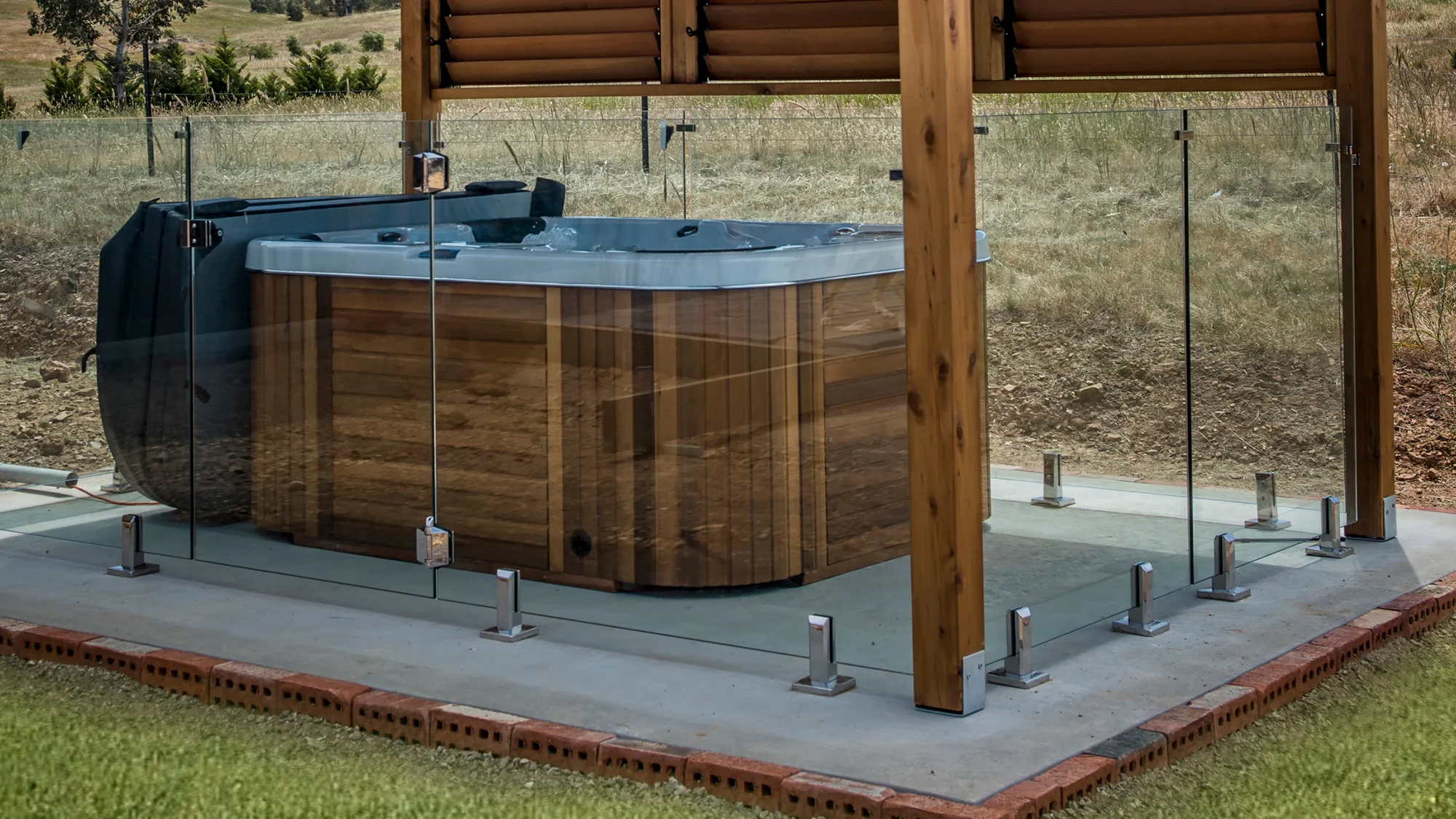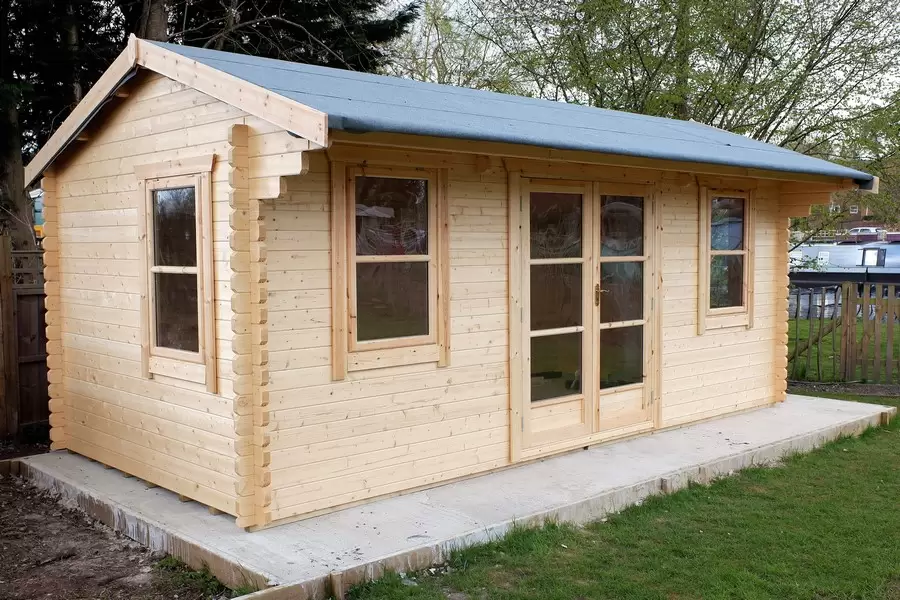
A strong concrete base is essential for sheds, garden rooms, summer houses, and hot tubs, ensuring long-term stability and preventing costly structural issues. In this detailed guide, we explain the professional process behind building durable concrete bases in Worcestershire, including ground preparation, depth requirements, reinforcement, curing times, and soil considerations. Homeowners will learn exactly what goes into a reliable base and what to expect from a proper installation.
See how we can help you!
With the variety of ground conditions across Worcestershire — from the soft soils around Droitwich to the firmer ground in Evesham — durability depends on both correct depth and proper compaction. A good concrete base should be level, reinforced, and built on a stable sub-base. It must also be designed to cope with load, moisture levels, and potential frost movement.
Many cheaper installations skip key structural steps, which often leads to early cracking or subsidence. A professionally installed base provides long-term support and ensures the structure above performs exactly as intended.
Before any concrete is mixed, the ground must be properly prepared. At Plex, the process begins with marking out the area precisely according to the structure’s footprint. We then remove turf, soil, and organic matter to the correct depth — typically around 150–250mm depending on the final slab requirements.
Next comes compaction. Worcestershire’s soil, particularly in the Vale of Evesham and Pershore areas, can hold moisture, making a stable sub-base essential. MOT Type 1 stone is laid and mechanically compacted in layers to form a foundation that won’t shift or settle. This prevents movement that can distort the shed or summer house above.
We also consider nearby drainage patterns and any risk of water pooling on or around the base. Proper preparation ensures the slab stays stable through winter, heavy rainfall, and freeze–thaw cycles.
Thickness depends entirely on the load it must support. Light timber sheds may only need a 75–100mm slab, while garden rooms or hot tubs often require a 125–200mm reinforced base. For example:
Hot tubs are often the most demanding, especially high-capacity models. A 1,500L–2,000L tub can exceed 2 tonnes when filled with water and occupants. Industry data from hot tub manufacturers confirms that uneven or insufficient bases are a leading cause of tub shell stress and pump issues, which makes a structurally sound base essential.
The final design always reflects the anticipated load, soil conditions, and access limitations.
Reinforcing mesh or steel rebar significantly increases the strength and lifespan of a concrete slab. It prevents cracking, supports evenly distributed loads, and helps the slab cope with movement in the ground beneath.
In Worcestershire clay soils, reinforcement is often crucial. Clay expands when wet and contracts when dry, causing minor ground shifts. Reinforcement prevents these shifts from damaging the slab, especially for larger garden buildings or heavy hot tubs.
At Plex, we typically use A142 or A193 steel mesh depending on the load requirements. For oversized structures, additional structural support may also be used around the perimeter.
Precision is essential. If the base is even slightly out of level, doors can jam, frames twist, and water may pool on the surface. Using laser levels, string lines, and profile boards, we ensure the slab is perfectly flat across its entire footprint.
This is especially important for summer houses and garden offices, where internal fittings like doors, glazing, and flooring rely on a uniform base. Hot tubs also require absolute accuracy — even a minor tilt can cause pumps and filters to work harder, reducing lifespan.
Drainage is a frequently overlooked part of base construction. Buildings placed directly on soil without adequate runoff often suffer from rot, mould, or rising damp. For hot tubs, poor drainage can cause waterlingering underneath the frame.
We ensure:
This protects the garden building and prolongs the life of both the structure and the concrete itself.
Concrete typically sets within 24–48 hours, but full curing takes around 28 days. Most manufacturers recommend waiting several weeks before placing heavy structures on top, especially hot tubs.
During this curing period, water evaporates slowly, allowing the concrete to reach maximum strength. Large structures placed too early can cause micro-fractures that weaken the slab.
If the base is installed in colder months, curing times may extend slightly. We always advise clients on when it is safe to move forward.

A neglected garden reimagined into a stunning rustic retreat, featuring reclaimed brickwork, a charming patio, and vibrant planting—blending timeless character with thoughtful design.

A complete garden overhaul in Cheltenham, transforming an overgrown, rat-infested space into a sleek, low-maintenance outdoor oasis with porcelain paving, integrated lighting, and a rat-proof brick wall.
Installing a concrete base is a multi-day process depending on size and complexity. Typically:
We always protect freshly laid concrete from frost, excessive heat, or unexpected rainfall. This ensures a smooth, even finish that remains structurally sound.
Prices vary depending on size, access, reinforcement, and overall complexity. Smaller bases for sheds and workshops cost significantly less than reinforced pads for hot tubs or garden buildings.
While costs differ by project, the most important factor is avoiding shortcuts. Cheap or DIY bases often fail within a few years, especially when installed on soft or wet ground. Investing in a professional base ensures long-term performance and prevents costly repairs or replacements.
A strong base begins with proper ground preparation.
Removing soil to the correct depth, compacting MOT Type 1, and levelling are essential for a stable slab that won’t move.
The thickness of the concrete depends on the load.
Light sheds need far less depth than heavy hot tubs or insulated garden rooms. Designing for the load prevents cracking or sinking later.
Reinforcement provides long-term strength.
Steel mesh or rebar protects against cracking, soil movement, and the weight of large structures.
Drainage design is crucial for protecting the structure.
Good drainage prevents moisture issues, rot, and structural movement, keeping buildings dry and stable.
Curing time affects the final strength of the slab.
Even though concrete sets quickly, it requires several weeks to reach full strength before heavy loads can be added.

.webp)
.webp)
.webp)
.webp)
.webp)
.webp)
.webp)
.webp)
Not all garden structures need the same type of base, and choosing the correct specification is one of the most important steps in the entire project. A small timber shed may only require a simple concrete pad, whereas a full garden office often needs a reinforced, level slab with insulation considerations.
For hot tubs, the demands increase dramatically. A hot tub filled with water and occupants often weighs several tonnes, and that weight must be supported evenly across the entire slab. This is why heavier structures typically require a reinforced base with greater depth, compacted sub-base, and a perfectly level finish.
Summer houses and insulated garden rooms fall somewhere between the two, but still require robust engineering due to the long-term load, internal fittings, and potential electrical installations. Because Worcestershire’s mixed soil conditions can vary even within the same property, every base must be designed individually rather than following a one-size-fits-all approach.
At Plex, we assess drainage patterns, soil type, access, and structural requirements before starting any work. This ensures that every base is built to last and fully compatible with the intended building. Whether it’s a shed, home gym, garden bar, or hot tub, the structure above will only ever perform as well as the base beneath it — which is why professional installation makes a significant difference.

A properly built concrete base is an essential foundation for sheds, garden rooms, workshops, and hot tubs in Worcestershire. With the county’s diverse soil conditions and seasonal weather patterns, the strength and longevity of any outdoor structure depend heavily on correct construction techniques. From excavation and sub-base preparation to reinforcement and curing, every step plays a vital role. By understanding what goes into the process, homeowners can make informed decisions and avoid the problems that come with cheaper, rushed installations. A well-constructed base ensures your garden building or hot tub performs reliably for many years, providing stability, safety, and peace of mind.

Sometimes the most cost-effective way to transform a tired, overgrown, or uneven garden is to start fresh. This article explores when full garden removal and reset make better sense than repeated patchwork repairs. From failing patios and drainage problems to compacted soil and outdated layouts, we explain the signs that it’s time for a complete redesign — and how Plex rebuilds outdoor spaces across Worcestershire from the ground up for long-term performance and usability.

Water pooling on a patio is one of the most common issues homeowners face, especially in wetter areas of Worcestershire. Puddling can lead to slippery surfaces, moss growth, staining, joint failure, and long-term structural damage. In this guide, we explain the true causes of standing water, including installation errors, sinking slabs, blocked drainage, and ground movement. We also break down the professional fixes and preventative measures used at Plex to keep patios draining correctly year-round.

A strong concrete base is essential for sheds, garden rooms, summer houses, and hot tubs, ensuring long-term stability and preventing costly structural issues. In this detailed guide, we explain the professional process behind building durable concrete bases in Worcestershire, including ground preparation, depth requirements, reinforcement, curing times, and soil considerations. Homeowners will learn exactly what goes into a reliable base and what to expect from a proper installation.